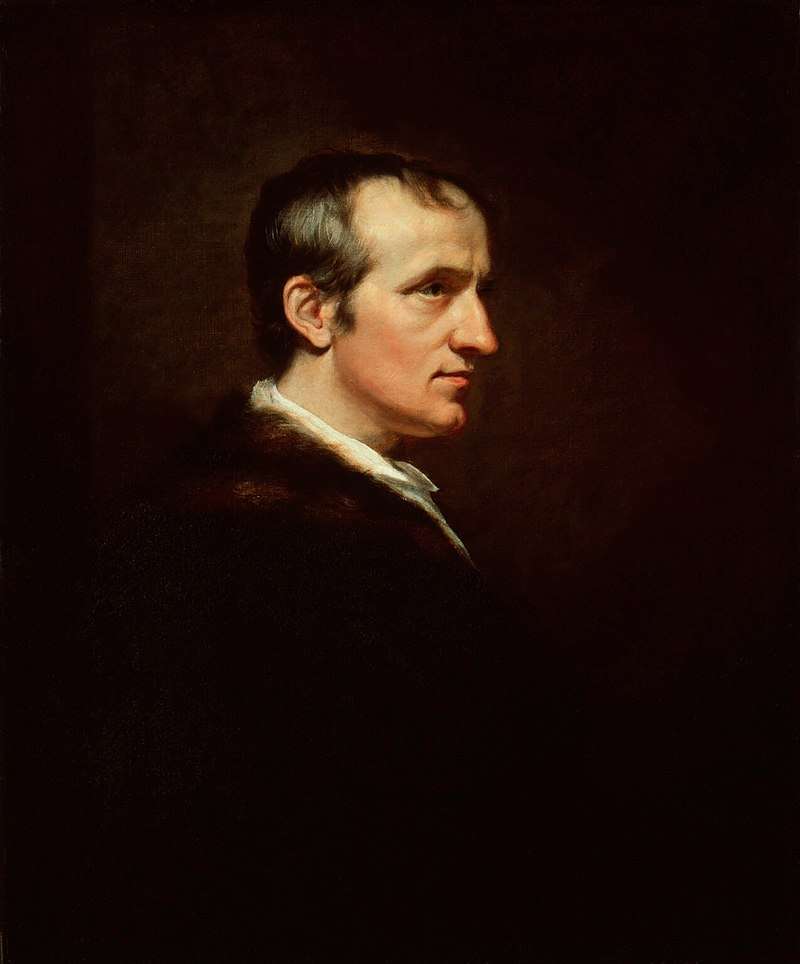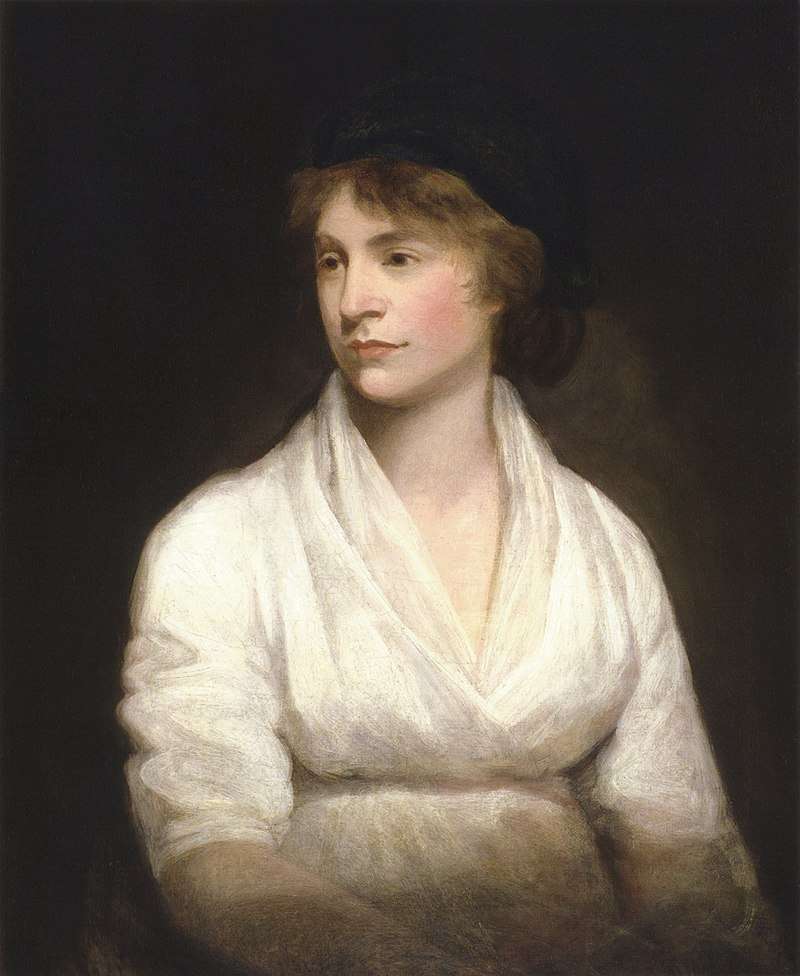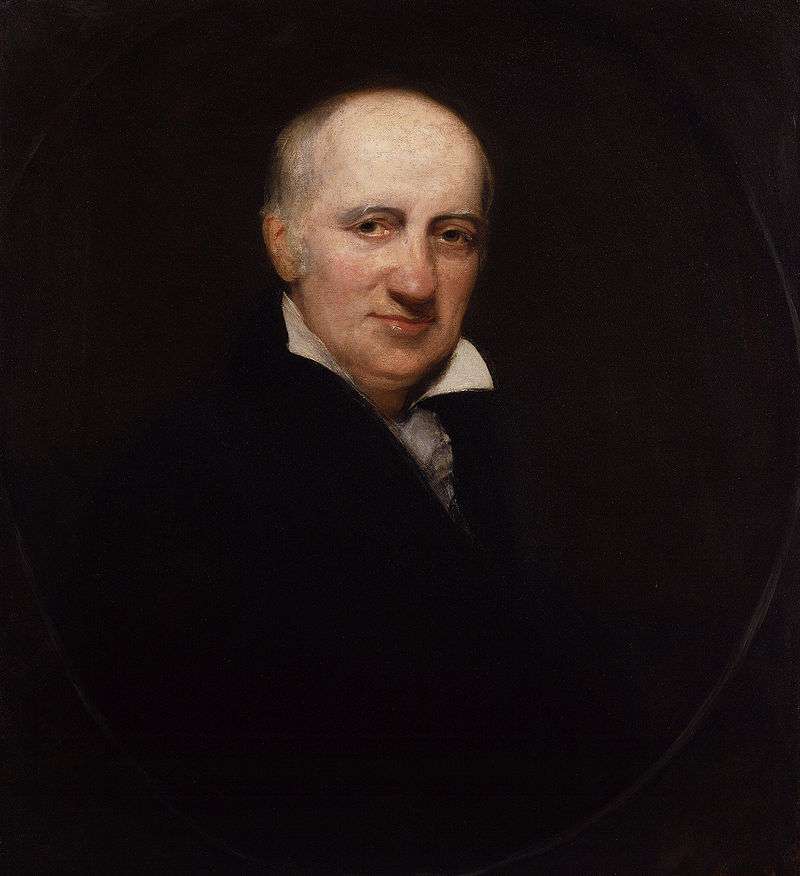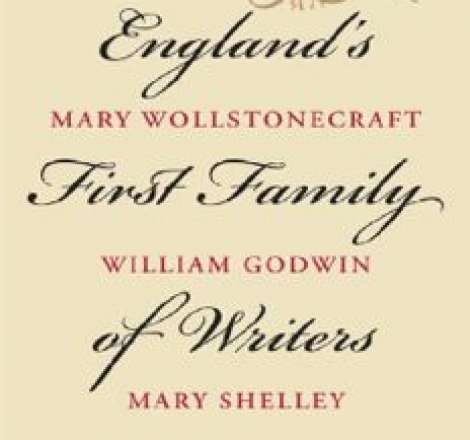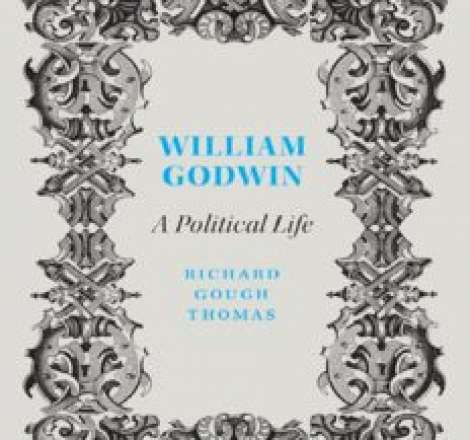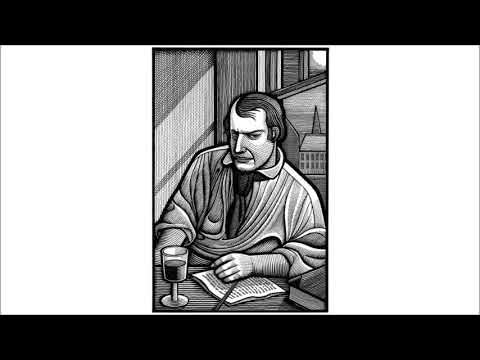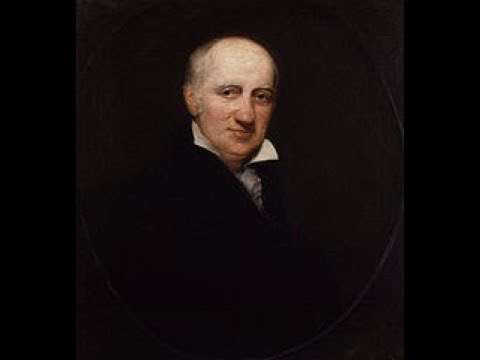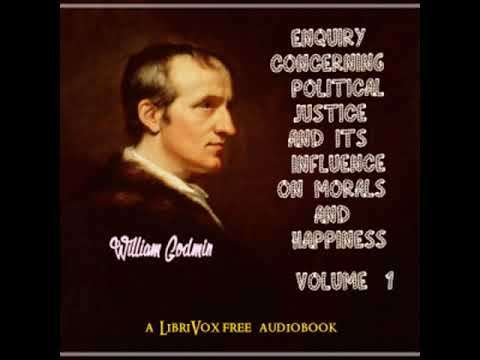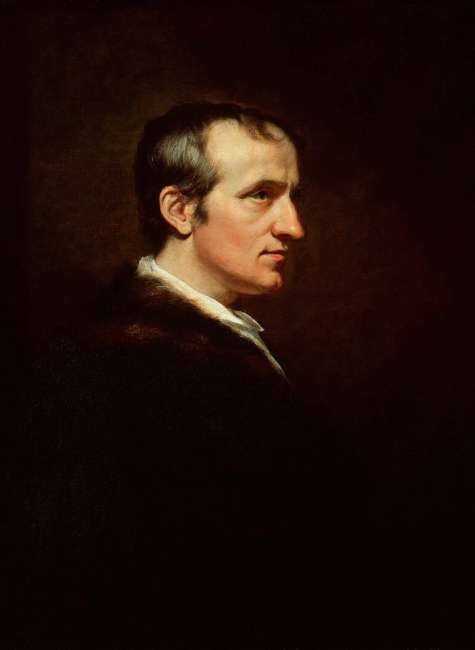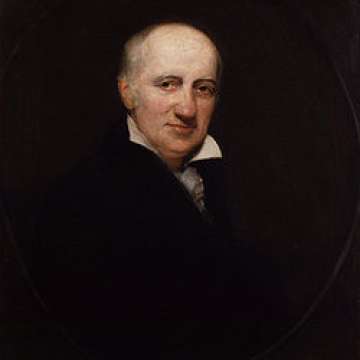

William Godwin (1756-1836)
Above all we should not forget, that government is an evil, an usurpation upon the private judgment and individual conscience of mankind.
William Godwin was an English journalist, political philosopher and novelist. He is considered one of the first exponents of utilitarianism and the first modern proponent of anarchism. Godwin is most famous for two books that he published within the space of a year: An Enquiry Concerning Political Justice, an attack on political institutions, and Things as They Are; or, The Adventures of Caleb Williams, an early mystery novel which attacks aristocratic privilege. Based on the success of both, Godwin featured prominently in the radical circles of London in the 1790s. He wrote prolifically in the genres of novels, history and demography throughout his life.
In the conservative reaction to British radicalism, Godwin was attacked, in part because of his marriage to the feminist writer Mary Wollstonecraft in 1797 and his candid biography of her after her death from childbirth. Their daughter, later known as Mary Shelley, would go on to write Frankenstein and marry the poet Percy Bysshe Shelley. With his second wife, Mary Jane Clairmont, Godwin set up The Juvenile Library, allowing the family to write their own works for children sometimes using noms de plume and translate and publish many other books, some of enduring significance. Godwin has had considerable influence on British literature and literary culture.
Early life and education
Godwin was born in Wisbech in the Isle of Ely, Cambridgeshire, to John and Anne Godwin. Godwin's family on both sides were middle-class. Godwin's parents adhered to a strict form of Calvinism. Godwin was the seventh of his parent's thirteen children. Godwin's mother came from a wealthy family but due to her uncle's frivolities the family wealth was squandered. Fortunately for the family her father was a successful merchant involved in the Baltic Sea trade. Godwin's father, a Nonconformist minister in Guestwick in Norfolk, died young, and never inspired love or much regret in his son; but in spite of wide differences of opinion, tender affection always subsisted between William Godwin and his mother, until her death at an advanced age.
William Godwin was educated for his father's profession at Hoxton Academy, where he studied under Andrew Kippis the biographer, and Dr. Abraham Rees of the Cyclopaedia. At eleven years old, he became the sole pupil of Samuel Newton, a strict hyper-Calvinist, who was a Sandemanian, a disciple of Robert Sandeman. Godwin later characterised Newton as, "... a celebrated north country apostle, who, after Calvin damned ninety-nine in a hundred of mankind, has contrived a scheme for damning ninety-nine in a hundred of the followers of Calvin."
He then acted as a minister at Ware, Stowmarket and Beaconsfield. At Ware the teachings of the French philosophers were brought before him by a friend, Joseph Fawcett, who held strong republican opinions. Godwin came to London in 1782, still nominally as a minister, to regenerate society with his pen – a real enthusiast, who never shrank from conclusions of the premises which he laid down. He adopted the principles of the Encyclopédistes, and his own aim was the complete overthrow of all existing political, social and religious institutions. He believed, however, that calm discussion was the only thing needful to carry every change, and from the beginning to the end of his career he deprecated every approach to violence.
Early writing
His first published work was an anonymous Life of Lord Chatham 1783. He published under his own name Sketches of History 1784, consisting of six sermons on the characters of Aaron, Hazael and Jesus, in which, though writing in the character of an orthodox Calvinist Godwin himself had become an atheist, his character enunciates the proposition "God Himself has no right to be a tyrant." Introduced by Andrew Kippis, he began to write in 1785 for the New Annual Register and other periodicals, producing also three novels now forgotten. His main contributions for the "Annual Register" were the Sketches of English History he wrote annually, which were summaries of domestic and foreign political affairs. He joined a club called the Revolutionists, and associated much with Lord Stanhope, Horne Tooke and Holcroft.
Marriage to Mary Wollstonecraft
Godwin first met Mary Wollstonecraft at the home of their mutual publisher. Joseph Johnson was hosting a dinner for another of his authors, Thomas Paine, and Godwin remarked years later that on that evening he heard too little of Paine and too much of Wollstonecraft; he did not see her again for some years. In the interim, Wollstonecraft went to live in France to witness the Revolution for herself, and had a child, Fanny Imlay, with an American adventurer named Gilbert Imlay. In pursuit of Gilbert Imlay's business affairs, Wollstonecraft travelled to Scandinavia, and soon afterwards published a book based on the voyage. Godwin read it, and later wrote that "If ever there was a book calculated to make a man in love with its author, this appears to me to be the book."
When Godwin and Wollstonecraft were reintroduced in 1796, their respect for each other soon grew into friendship, sexual attraction, and love. Once Wollstonecraft became pregnant, they decided to marry so that their child would be considered legitimate by society. Their marriage revealed the fact that Wollstonecraft had never been married to Imlay, and as a result she and Godwin lost many friends. Godwin received further criticism because he had advocated the abolition of marriage in Political Justice. After their marriage at St. Pancras on 29 March 1797, they moved into two adjoining houses in Somers Town so that they could both still retain their independence; they often communicated by notes delivered by servants.

Mary Wollstonecraft Godwin was born in Somers Town on 30 August 1797, the couple's only child. :5 Godwin had hoped for a son and had been planning on naming the child "William." On 10 September 1797 Wollstonecraft died of complications following the birth. By all accounts, it had been a happy and stable, though brief, relationship. Now Godwin, who had been a bachelor until a few months before, was distraught at the loss of the love of his life. Simultaneously, he became responsible for the care of these two young girls, the new-born Mary and toddler Fanny.
When Mary was three years old, Godwin left his daughters in the care of James Marshall while he travelled to Ireland. Godwin's tone in his letters demonstrates how much he cared about them. His letters show the stress he placed on giving his two daughters a sense of security. "And now what shall I say for my poor little girls? I hope they have not forgot me. I think of them every day, and should be glad, if the wind was more favourable, to blow them a kiss a-piece from Dublin to the Polygon.. but I have seen none that I love so well or think half so good as my own."
Second marriage and book publishing
In 1801, Godwin married his neighbour Mary Jane Clairmont. She brought two of her own children into the household, Charles and Claire. Journalist H.N. Brailsford wrote in 1913, "She was a vulgar and worldly woman, thoroughly feminine, and rather inclined to boast of her total ignorance of philosophy." While Fanny eventually learned to live with Clairmont, Mary's relationship with her stepmother was tense. Mary writes, "As to Mrs Godwin, something very analogous to disgust arises whenever I mention her",:200 "A woman I shudder to think of".
In 1805, the Godwins set up a shop and publishing house called the Juvenile Library, significant in the history of children's literature. Through this, Godwin wrote children's primers on Biblical and classical history, and using the pseudonym Edward Baldwin, he wrote a variety of books for children, including a version of Jack and the Beanstalk, and a biography of the Irish artist William Mulready, who illustrated works for them. They kept alive family ties, publishing the first book by Margaret King then Lady Mount Cashell, who had been a favoured pupil of Mary Wollstonecraft. They published works never since out of print, such as Charles and Mary Lamb's Tales from Shakespeare. The Juvenile Library also translated European authors. The first English edition of Swiss Family Robinson was translated from the French, not the German and edited by them. The business was the family's mainstay for decades.
Children
Godwin was responsible for a family of five children, none of whom had the same two parents. Although he raised them with his second wife, the ghost of Mary Wollstonecraft hovered over the family, as evidenced by the John Opie portrait to which Godwin gave pride of place in his study.
The eldest was Fanny Imlay 1794–1816, who committed suicide as a young woman. Charles Gaulis Clairmont ended up as Chair of English literature at Vienna University and taught sons of the royal family; news of his sudden death in 1849 distressed Maximilian. Mary Godwin 1797–1851 gained fame as Mary Shelley, author of Frankenstein. Half a year younger than her was Claire Clairmont, Mary Jane's only daughter, to whom she showed favouritism. The youngest, and the only child of the second marriage, was William Godwin the Younger 1803–1832. Godwin sent him first to Charterhouse School and then to various other establishments of a practical bent. Nonetheless, he eventually earned his living by the pen. He died at 29, leaving the manuscript of a novel, which Godwin saw into print. All of Godwin's children who lived into adulthood worked as writers or educators, carrying on his legacy and that of his wives. Only two of them had children who in turn survived: Percy Florence Shelley, and the son and daughter of Charles. Godwin did not welcome the birth of Allegra Byron, but Claire's only child died aged five.

Godwin had high hopes for Mary, giving her a more rigorous intellectual experience than most women of her period, and describing her as "very intelligent." He wished to give his daughter a more "masculine education" and prepared her to be a writer. However, Godwin withdrew his support as Mary became a woman and pursued her relationship with Percy Shelley. Mary's first two novels, Frankenstein and Mathilda, may be seen as a reaction to her childhood. Both explore the role of the father in the child's socialisation and the control the father has on the child's future. Shelley's last two novels, Lodore and Falkner, re-evaluate the father-daughter relationship. They were written at a time when Shelley was raising her only surviving child alone and supporting her ageing father. In both novels, the daughter eludes the father's control by giving him the traditional maternal figure he asks for. This relationship gives the daughter control of the father.
Later years and death
Godwin was awarded a sinecure position as Office Keeper and Yeoman Usher of the Receipt of the Exchequer, which came with grace and favour accommodation within the Palace of Westminster.
In later years, Godwin came to expect support and consolation from his daughter. Two of the five children he had raised had pre-deceased him, and two more lived abroad. Mary responded to his expectations and she cared for him until he died in 1836.
Legacy and memorials
Godwin was buried next to Mary Wollstonecraft in the churchyard of St Pancras, where they had married. His second wife outlived him, and eventually was buried there too. The three share a gravestone. In the 1850s, Wollstonecraft and Godwin's remains were moved to Bournemouth, to the family tomb of the Shelleys.
The surviving manuscripts for many of Godwin's best-known works are held in the Forster Collection at the Victoria and Albert Museum. The V&A's manuscripts for Political Justice and Caleb Williams were both digitised in 2017 and are now included in the Shelley-Godwin Archive.
Godwin Close, a cul-de-sac in his hometown and a wall plaque on a building adjacent to the Georgian Angles Theatre in Alexandra Road, Wisbech both serve as reminders of William Godwin.
Works and ideas
Enquiry Concerning Political Justice and Caleb Williams
In 1793, while the French Revolution was in full swing, Godwin published his great work on political science, Enquiry concerning Political Justice, and its Influence on General Virtue and Happiness. The first part of this book was largely a recap of Edmund Burke's A Vindication of Natural Society – an anarchist critique of the state. Godwin acknowledged the influence of Burke for this portion. The rest of the book is Godwin's positive vision of how an anarchist or minarchist society might work. Political Justice was extremely influential in its time: after the writings of Burke and Paine, Godwin's was the most popular written response to the French Revolution. Godwin's work was seen by many as illuminating a middle way between the fiery extremes of Burke and Paine. Prime Minister William Pitt famously said that there was no need to censor it, because at over £1 it was too costly for the average Briton to buy. However, as was the practice at the time, numerous "corresponding societies" took up Political Justice, either sharing it or having it read to the illiterate members. Eventually, it sold over 4000 copies and brought literary fame to Godwin.
Godwin augmented the influence of Political Justice with the publication of a novel that proved equally popular, Things as They Are; or, The Adventures of Caleb Williams. This tells the story of a servant who finds out a dark secret about Falkland, his aristocratic master, and is forced to flee because of his knowledge. Caleb Williams is essentially the first thriller: Godwin wryly remarked that some readers were consuming in a night what took him over a year to write. Not the least of its merits is a portrait of the justice system of England and Wales at the time and a prescient picture of domestic espionage. His literary method, as he described it in the introduction to the novel, also proved influential: Godwin began with the conclusion of Caleb being chased through Britain, and developed the plot backwards. Dickens and Poe both commented on Godwin's ingenuity in doing this.
Political writing
In response to a treason trial of some of his fellow British Jacobins, among them Thomas Holcroft, Godwin wrote Cursory Strictures on the Charge Delivered by Lord Chief Justice Eyre to the Grand Jury, 2 October 1794 in which he forcefully argued that the prosecution's concept of "constructive treason" allowed a judge to construe any behaviour as treasonous. It paved the way for a major, victory for the Jacobins, as they were acquitted.
However, Godwin's own reputation was eventually besmirched after 1798 by the conservative press, in part because he chose to write a candid biography of his late wife, Mary Wollstonecraft, entitled Memoirs of the Author of A Vindication of the Rights of Woman, including accounts of her two suicide attempts and her affair before her relationship with Godwin with the American adventurer Gilbert Imlay, which resulted in the birth of Fanny Imlay.
Godwin, stubborn in his practice, practically lived in secret for 30 years because of his reputation. However, in its influence on writers such as Shelley, who read the work on multiple occasions between 1810 and 1820, and Kropotkin, Political Justice takes its place with Milton's Areopagitica and Rousseau's Émile as a defining anarchist and libertarian text.
Interpretation of political justice
By the words "political justice" the author meant "the adoption of any principle of morality and truth into the practice of a community," and the work was therefore an inquiry into the principles of society, government, and morals. For many years Godwin had been "satisfied that monarchy was a species of government unavoidably corrupt," and from desiring a government of the simplest construction, he gradually came to consider that "government by its very nature counteracts the improvement of original mind," demonstrating anti-statist beliefs that would later be considered anarchist.
Believing in the perfectibility of the race, that there are no innate principles, and therefore no original propensity to evil, he considered that "our virtues and our vices may be traced to the incidents which make the history of our lives, and if these incidents could be divested of every improper tendency, vice would be extirpated from the world." All control of man by man was more or less intolerable, and the day would come when each man, doing what seems right in his own eyes, would also be doing what is in fact best for the community, because all will be guided by principles of pure reason.
Such optimism was combined with a strong empiricism to support Godwin's belief that the evil actions of men are solely reliant on the corrupting influence of social conditions, and that changing these conditions could remove the evil in man. This is similar to the ideas of his wife, Mary Wollstonecraft, concerning the shortcomings of women as due to discouragement during their upbringing.
Peter Kropotkin remarked of Godwin that when "speaking of property, he stated that the rights of every one 'to every substance capable of contributing to the benefit of a human being' must be regulated by justice alone: the substance must go 'to him who most wants it'. His conclusion was communism."
Debate with Malthus
In 1798, Thomas Robert Malthus wrote An Essay on the Principle of Population in response to Godwin's views on the "perfectibility of society." Malthus wrote that populations are inclined to increase in times of plenty, and that only distress, from causes such as food shortages, disease, or war, serves to stem population growth. Populations in his view are therefore always doomed to grow until distress is felt, at least by the poorer segment of the society. Consequently, poverty was felt to be an inevitable phenomenon of society.
Malthus went on to argue that under such ideal conditions, the population could conceivably double every 25 years. However, the food supply could not continue doubling at this rate for even 50 years. The food supply would become inadequate for the growing population, and then:
Let us imagine for a moment Mr. Godwin's beautiful system of equality realized in its utmost purity, and see how soon this difficulty might be expected to press under so perfect a form of society.... Let us suppose all the causes of misery and vice in this island removed. War and contention cease. Unwholesome trades and manufactories do not exist. Crowds no longer collect together in great and pestilent cities.... Every house is clean, airy, sufficiently roomy, and in a healthy situation.... And the necessary labours of agriculture are shared amicably among all. The number of persons, and the produce of the island, we suppose to be the same as at present. The spirit of benevolence, guided by impartial justice, will divide this produce among all the members of the society according to their wants....With these extraordinary encouragements to population, and every cause of depopulation, as we have supposed, removed, the numbers would necessarily increase faster than in any society that has ever yet been known....
Malthus went on to argue that under such ideal conditions, the population could conceivably double every 25 years. However, the food supply could not continue doubling at this rate for even 50 years. The food supply would become inadequate for the growing population, and then:
...the mighty law of self-preservation expels all the softer and more exalted emotions of the soul.... The corn is plucked before it is ripe, or secreted in unfair proportions; and the whole black train of vices that belong to falsehood are immediately generated. Provisions no longer flow in for the support of the mother with a large family. The children are sickly from insufficient food.... No human institutions here existed, to the perverseness of which Mr. Godwin ascribes the original sin of the worst men. No opposition had been produced by them between public and private good. No monopoly had been created of those advantages which reason directs to be left in common. No man had been goaded to the breach of order by unjust laws. Benevolence had established her reign in all hearts: and yet in so short a period as within fifty years, violence, oppression, falsehood, misery, every hateful vice, and every form of distress, which degrade and sadden the present state of society, seem to have been generated by the most imperious circumstances, by laws inherent in the nature of man, and absolutely independent of it human regulations.
In Political Justice Godwin had acknowledged that an increase in the standard of living as he envisioned could cause population pressures, but he saw an obvious solution to avoiding distress: "project a change in the structure of human action, if not of human nature, specifically the eclipsing of the desire for sex by the development of intellectual pleasures". In the 1798 version of his essay, Malthus specifically rejected this possible change in human nature. In the second and subsequent editions, however, he wrote that widespread moral restraint, i.e., postponement of marriage and pre-nuptial celibacy sexual abstinence, could reduce the tendency of a population to grow until distress was felt.". Godwin also saw new technology as being partly responsible for the future change in human nature into more intellectually developed beings. He reasoned that increasing technological advances would lead to a decrease in the amount of time individuals spent on production and labour, and thereby, to more time spent on developing "their intellectual and moral faculties". Instead of population growing exponentially, Godwin believed that this moral improvement would outrun the growth of population. Godwin pictured a social utopia where society would reach a level of sustainability and engage in "voluntary communism".
In July 1820, Godwin published Of Population: An Enquiry Concerning the Power of Increase in the Numbers of Mankind as a rebuttal to Malthus' essays. Godwin's main argument was against Malthus' notion that population tends to grow exponentially. Godwin believed that for population to double every twenty-five years as Malthus had asserted had occurred in the United States, due to the expanse of resources available there, every married couple would have to have at least eight children, given the rate of childhood deaths. Godwin himself was one of thirteen children, but he did not observe the majority of couples in his day having eight children. He therefore concluded:
In reality, if I had not taken up the pen with the express purpose of confuting all the errors of Mr Malthus's book, and of endeavouring to introduce other principles, more cheering, more favourable to the best interests of mankind, and better prepared to resist the inroads of vice and misery, I might close my argument here, and lay down the pen with this brief remark, that, when this author shall have produced from any country, the United States of North America not excepted, a register of marriages and births, from which it shall appear that there are on an average eight births to a marriage, then, and not till then, can I have any just reason to admit his doctrine of the geometrical ratio.
Interest in earthly immortality
In his first edition of Political Justice Godwin included arguments favouring the possibility of "earthly immortality" what would now be called physical immortality, but later editions of the book omitted this topic. Although the belief in such a possibility is consistent with his philosophy regarding perfectibility and human progress, he probably dropped the subject because of political expedience when he realised that it might discredit his other views. Godwin explored the themes of life extension and immortality in his gothic novel St. Leon, which became popular and notorious at the time of its publication in 1799, but is now mostly forgotten. St. Leon may have provided inspiration for his daughter's novel Frankenstein.
Major works
- Damon and Delia, A Tale 1784
- Enquiry concerning Political Justice, and its Influence on General Virtue and Happiness 1793
- Things as They Are; or, The Adventures of Caleb Williams 1794
- The Enquirer London: George Robinson, 1797; rev. 1823
- Memoirs of the Author of A Vindication of the Rights of Woman 1798
- St. Leon 1799
- Life of Geoffrey Chaucer 1804
- Fleetwood 1805
- The Pantheon: Or, Ancient History of the Gods of Greece and Rome 1814
- Mandeville 1817
- Life of Lady Jane Grey, and of Lord Guildford Dudley, Her Husband 1824
- History of the Commonwealth book 1824–1828
- Cloudesley: A Tale 1830
- Thoughts on Man, his Nature, Productions, and Discoveries, Interspersed with some particulars respecting the author 1831
- Deloraine 1833
- Lives of the Necromancers 1834
- Transfusion 1835

